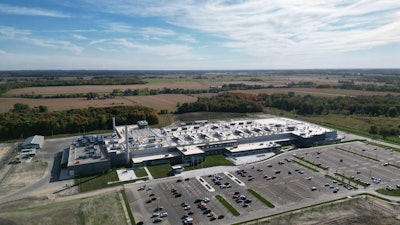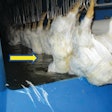
Maple Leaf Foods’ new poultry plant in London, Ontario, should be operating at full capacity at the end of the year, the company’s CEO said.
Speaking during a quarterly earnings call on August 3, CEO Curtis Frank offered an update on the new plant, began operations in November 2022. The new facility is replacing several older plants within the Maple Leaf network.
“We just had our six-month operations review at the London plant a couple of weeks ago, and I was super excited by what I heard and what I saw,” said Frank.
Processing capacity
At the present time, 250,000 birds are being processed per day at the new plant. This means they are processing at about 75% capacity, Frank said.
The products processed at the facility represent about 300 SKUs, he added, “and our fill rates are excellent.”
According to Frank, processing workloads from four legacy plants will be transferred to the London plant, and for two of those, that process has already been completed. The facilities in Toronto and St. Mary’s, Ontario, have already closed, while the transition involving the plant in Brampton, Ontario, is more than halfway completed. The capacity from Schomberg, Ontario, will occur in the fourth quarter of 2023.
Poultry plant staff
Frank said the hiring of employees for the London plant “is completely on track,” and in some ways, has even exceeded expectations.
Presently, Maple Leaf Foods has about 1,300 people working at the plant, which when fully staffed will employ 1,600 people.
Many of those 1,300 are employees who transferred from the closing plants. Frank estimated that close to 400 people transferred, and that the expertise of those people has helped the plant achieve such a successful start-up.
“The strength of leadership on the plant floor that has transitioned from other facilities helps mitigate some of the start-up risk as well. We’ve been fortunate with bringing in some skill and experience from our existing facilities,” he said, which has also helped the onboarding process go more smoothly.
Aside from those transferring workers, the vast majority of the new employees were recruited from within the existing Canadian workforce.
Frank said they had initially planned to hire 200-300 people through the temporary foreign recruitment program, but now that number appears to be closer to 50, which Frank said is a positive sign of the company’s ability to recruit labor from the local market area.

















